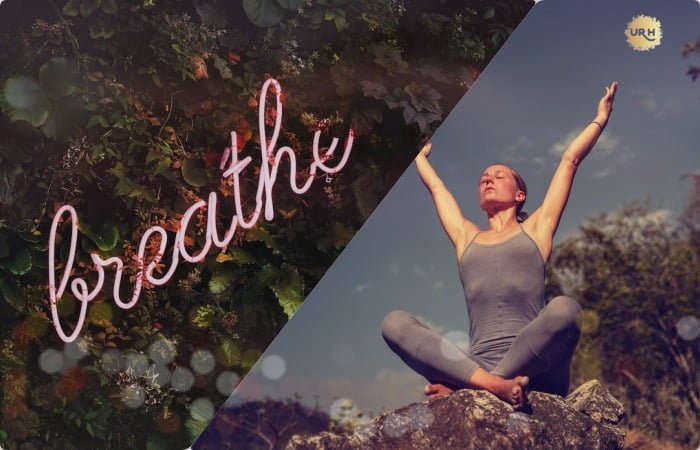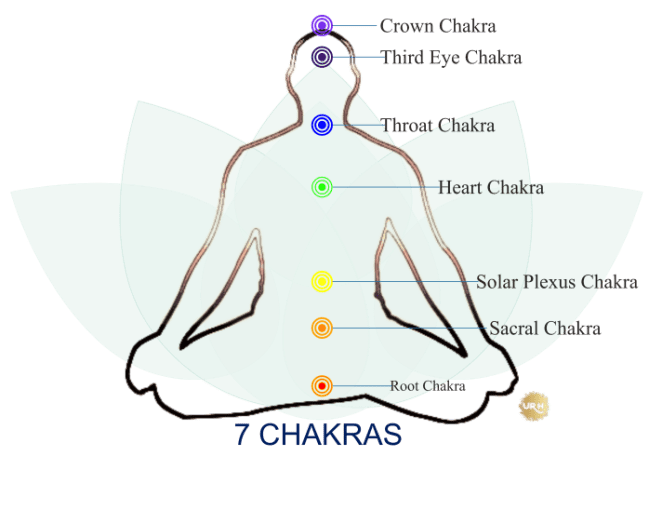What Is Yoga And History Of Yoga – Exploring Meaning & Historical Roots
What is Yoga? Yoga is much more than just a physical exercise; it’s an ancient teaching having its root in Indian history, it helps us to achieve physical health and teaches us to control our thoughts via various techniques/methods.
In the western part of the world yoga is identified as the physical aspect of the complete teaching, which is known as “asana”( Meaning “seat” or “pose”). Once you understand Yoga’s roots and how it has evolved over time, you will then truly understand Yoga and it’s importance.
The history of Yoga starts from the pre-classical era when the foundations of this practice were laid on Indian soil.
The ancient texts (“Patanjali Yoga Sutra” ) and teachings shaped yoga during the classical era, and the post-classical era, which saw the rise of various schools and approaches to yoga.
The modern era of yoga, where this ancient practice has taken on a global scale and gained immense popularity, when Swami Vivekananda, a Hindu monk, brought yoga and Vedanta (knowledge of the Vedas) to the Western world.
From yoga studios popping up in every corner of the world to celebrities and public figures embracing its benefits and talking openly about Yoga.
What Is Yoga ?

Yoga means to unite. Unite what, the body, mind, and spirit. Unite how, through a group of physical, spiritual, and mental practices that originated in the ancient land of India, this union of body, mind, and spirit helps you to understand the ultimate nature of life/existence and how it is made.
In Sanskrit root ‘Yuj’, means ‘to join’ or ‘to yoke’ or ‘to unite’ so its the word YOGA.
First written by the sage Patanjali in his “Patanjali Yoga Sutra” around 200 C.E. But the practice was in fact handed down from teacher to student long before this Yoga Sutra was written. In the old days, this was performed by a one to one teaching from teacher to student.
Yoga has been practiced for thousands of years now, and during such a time many different interpretations and styles have been developed and practiced across many places, most of these practices focus on the ultimate goal of yoga is to achieve liberation from suffering.
Although each practice or tradition of yoga has its own styles, most focus on bringing together body, mind, and breath as a means of altering energy or shifting consciousness.
Sage Patanjali in his Yoga Sutra provided the traditional foundation of yoga, in which he has written an eightfold path of the practice, known as the ‘Eight Limbs of Yoga’.
The History Of Yoga Timeline

So this yoga history timeline shows the Pre classical era, classical era, post classical era and modern era of Yoga.
The Pre-Classical Era of Yoga
The first time in the history of Yoga where we can find the actual word “Yoga” is in the Vedas, a stream of knowledge that is essentially considered the foundation of Hindu and Sanskrit literature. Veda, in Sanskrit, translates to knowledge.

Knowledge of life. There are four Vedas of sacred texts. And the word “Yoga” written first in the Rig Veda on of the four vedas. We found the first known definition of yoga in Rig Veda.
Yoga means “to yoke,” in a reference to the yoke which hitches an animal. So this gives us a primary definition of yoga — to join.
The Classical Era of Yoga
Sage Patanjali was an Indian who is believed to have authored or compiled the “Patanjali Yoga Sutra”. Sage Patanjali’s teachings in the Yoga Sutra form a part of the scriptural foundation of Yoga philosophy.
It is thought that Patanjali compiled the Yoga Sutra from older yogic texts; however, they contain a lot of original material as well.
Patanjali is highly regarded for the clarity he brought to yogic philosophy (Via Yoga Sutra) and his work continues to inspire yoga followers and instruction to this day.
The collection contains what is thought to be much of the basis of classical yoga philosophy and is made up of 196 Sutra (“threads” or discourses).
The total 196 sutras are then divided into four topical books known as Pada:
- Samadhi pada (Contemplation, Enlightenment – what is Yoga)
- Sadhana pada (Practice – How to gain a Yogic state)
- Vibhuti pada (Accomplishments, Manifestations – Benefits of Yoga)
- Kaivalya pada (Absoluteness, Liberation – Freedom from suffering
8 Limbs Of Yoga Patanjali
Patanjali’s Yoga Sutras – 8 Lmbs Of Yoga
- Yama – Five abstentions (or outer observances)
- Niyama – Five inner observances
- Asana – Meaning “seat” or “pose” – Physical posture needed for meditation
- Pranayama – Controlled or suspended breath
- Pratyahara – Withdrawal of the senses
- Dharana – Single-pointed concentration
- Dhyana – Meditation
- Samadhi – Liberation

The Post Classical Era of Yoga
The next iteration in the history of yoga begins a few centuries after Patanjali and the Yoga Sutra. Yoga was seen as a method to transcend reality. During this time, Yoga emerged as more of a life practice than just an exercise.
This was the time when Yoga began to travel around the world through acclaimed teachers (early in 1800’s). Yoga did not reach the U.S. until the 1890’s.
The Modern Era of Yoga
In 1785, the Bhagavad Gita was translated into English by Charles Wilkins, this helped in spreading awareness and global interest in yoga. During this time, the concepts and philosophies of yoga travelled internationally with the help of some known key figures.
Swami Vivekananda, a Hindu monk, first introduced Yoga and Vedanta (knowledge of the “Vedas”, religious texts originating in ancient India) to the Western world when he first visited America.
Around 1893 Swami Vivekananda reached America first time, he gave lectures on Hindu philosophy bringing the East to the West.
The knowledge that Swami Vivekananda spread focused on the practices of pranayama (breath work), meditation, and transcendental thinking. The popularity of yoga in the West continued to grow fast.
In early 1950, Indra Devi started YOGA studio in Hollywood, helped in the rapid growth of Yoga. During this time local teachers adapted Hatha Yoga into their own styles
For example:
- Jivamukti Yoga: By David Life and Sharon around 19 84
- Forrest Yoga: Created by Ana Forrest in 19 82
- Power Vinyasa Yoga: By Baron around 19 90
Yoga and its understanding have evolved in many ways since its origin, thousands of years ago. Today, the fact is that we find a YOGA studio on nearly every block. Nowadays a culture of modern yoga has taken a strong turn toward social media.
All of these facets just indicate how far modern yoga has ventured into a completely different direction, compared to its origin in the north.
It’s not that modern yoga is “right” or “wrong” — but without a doubt, it is important to understand the way it was historically intended. In the West, YOGA is mostly about Asana, or physical postures.
But to Yoga experts in the East, Asana is only a part of the full experience of “yoga.” Yoga is far more than just physical practice, it’s a way of life.
While Yoga was traditionally taught in a guru-disciple relationship (Taught by the teacher to the student, where the student is living with his teacher), modern methods such as group classes, online platforms, and instructional videos have made yoga accessible to a broader audience.
The modern era of yoga represents a fusion of ancient teaching/wisdom and the contemporary lifestyles of today’s city leaving.
FAQ – What Is Yoga And Patanjali Yoga Sutra
What is yoga?
Yoga is a holistic practice that combines physical postures, breathing exercises, meditation, and ethical principles to promote overall well-being of person and inner harmony.It began as a spiritual journey but in modern times it become popular for promoting physical and mental well-being.
What is the history of yoga?
The word ‘Yoga’ was first came in the Indian ancient Sanskrit texts called Veda which dates back to 1200 – 1500 BC.
Yoga has been through different eras,
Pre-Classical era
Classical era
Post-Classical era
Modern era
Who is the father of yoga?
Sage Patanjali was an Indian who is believed to have authored the “Patanjali Yoga Sutra” known as the father of Yoga.
How has Yoga evolved in the modern era?
In the modern era, Yoga has gained global popularity and acceptance.
Influential figures like Swami Vivekananda and Tirumalai Krishnamacharya played important roles in introducing Yoga to the Western world
Conclusion:
The modern era of yoga, where this ancient practice has taken on a global scale and gained immense popularity, when Swami Vivekananda, a Hindu monk, first introduced Yoga and Vedanta (knowledge of the “Vedas”, religious texts originating in ancient India) to the Western world when he first visited America.
Though its (Yoga) roots in the Indus Valley Civilisation to its global popularity in the modern era, Yoga has become a globally known practice. Yoga offers a way to holistic well being, covering the physical body and mind.
So, Step into the yoga studio, join a virtual class or simply find a quiet space where you can begin your practice.







